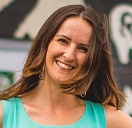 The Toronto Fringe
The Toronto Fringe
The Toronto Fringe provides creative opportunities for artists and audiences by producing two important festivals – the Toronto Fringe Festival and the Next Stage Theatre Festival – and by running outreach activities that benefit youth, artists and the theatre community at large. The Fringe Creation Lab at the Centre for Social Innovation Annex, welcomes independent artists year round, encouraging their creative work by offering them affordable space to make art, congregate and innovate.
The Fringe Festival, Fringe’s flagship event, is Toronto’s largest theatre and performance festival. 155+ productions are featured at 25+ venues across the west end of Toronto, drawing more than 90,000 people over 12 days each year.
The Toronto Fringe was an early participant in the Arts Endowment Fund (AEF) program, a program of the Government of Ontario through the Ministry of Tourism, Culture and Sport and administered by the Ontario Arts Foundation. Under the terms of the program, money raised by eligible arts organizations for endowment from the private sector was matched dollar for dollar, up to a predetermined maximum. Each year organizations receive income from their endowments to be used for their ongoing operations.
The Toronto Fringe raised $140,000 for endowment over 10 years of the initial matching phase of the program which ran from 1998-2008. In 2012, the financial position of the Toronto Fringe was such that the Board of Directors felt confident to add an additional $40,000 to the endowment from reserve funds. With additional matching funds provided through the Department of Canadian Heritage (Endowment Incentives Component of the Canada Cultural Investment Fund) the Fringe was able to receive an additional $38,000 in matching funds for their endowment.
The current market value of the Toronto Fringe Endowment Funds at the Ontario Arts Foundation is $256,000, with the Fringe having received a total of $84,000 in endowment income since its inception. We recently spoke with Kelly Straughan, Executive Director of the Toronto Fringe. ;
Kelly, how does the Fringe use the income you receive from the Arts Endowment Fund?
Unlike a grant, where funds are received in and then directly disbursed out, the endowment income comes in, and we are free to be thoughtful on where best to allocate the income. We so appreciate that it is unrestricted – one year it may be used for marketing support, or another be applied to help fund the Fringe Kid’s Club. We decide where it best meets the needs of the festival and our programs. A nice feature, is that unlike grants, we aren’t required to invest scarce time on developing and completing a grant application and there is no annual reporting requirement.
2014 was a really strong year for the Fringe, in addition to box office receipts, you also received $70,000 in donations. What contributed to this success?
When I looked at the organization as the new Executive Director, I realized we were needed to direct more effort on our relationship with our longstanding supporters. We decided to focus on intentional stewardship and created new staff roles to focus on donors and donor stewardship. I believe one outcome came in the form of $36,000 in Tip of the Fringe Donations. We also began to hold events to recognize and connect with our key individual supporters.
How has the endowment helped the Toronto Fringe?
It has provided our organization and board with a way to think about accumulated surplus. We had been careful in managing our finances, and absent any immediate plans, we decided to allocate a part of the surplus to the endowment. We like the consistent income we receive annually, we like the fact that it is unrestricted and we are grateful that the capital is safely invested by the Ontario Arts Foundation.
How does this align with the demographics of your audience?
Fringe is still ‘young’ and growing – the majority of our attendees work and live in downtown/central Toronto. Our younger supporters both come to performances and then stay post performances and participate in the Fringe Club which supports local vendors as well as the festival organization. We have a 50+ segment, whose experience with the Festival now includes ‘insider access’ to the producers, and attending talkback sessions. We feel we are helping our the audience feel they ‘own’ and are ‘invested’ in the festivals’ success.
What’s next for the Fringe?
Like most arts organizations, we start at ‘0’ each year – fundraising, selling tickets and sponsorships to fund the operating budget of approx.. $1.4 million. We are trying to demonstrate the impact of the Fringe to local businesses – we really are still a local festival. We are trying to attract ‘Ontarians’ and key an eye on ways to engage all of our donors. Plans are starting for the Next Stage Theatre Festival in January and the lottery applications for Fringe 2015. Artists this year were pleased to see their shows selling better than ever and many shows were sold out.
For more information on the Toronto Fringe:
